What is the Best Screen Resolution for PC Gaming?
Guide to Screen Resolution in PC Gaming: Choosing of optimal screen resolution and Best Screen Resolution for PC Gaming, Screen Resolution vs FPS. Gaming in 720p HD, 1080p FHD, 1440p QHD, UWQHD, 2160p UHD, Multi Monitor Setup. All you should you know about PC screen resolutions.
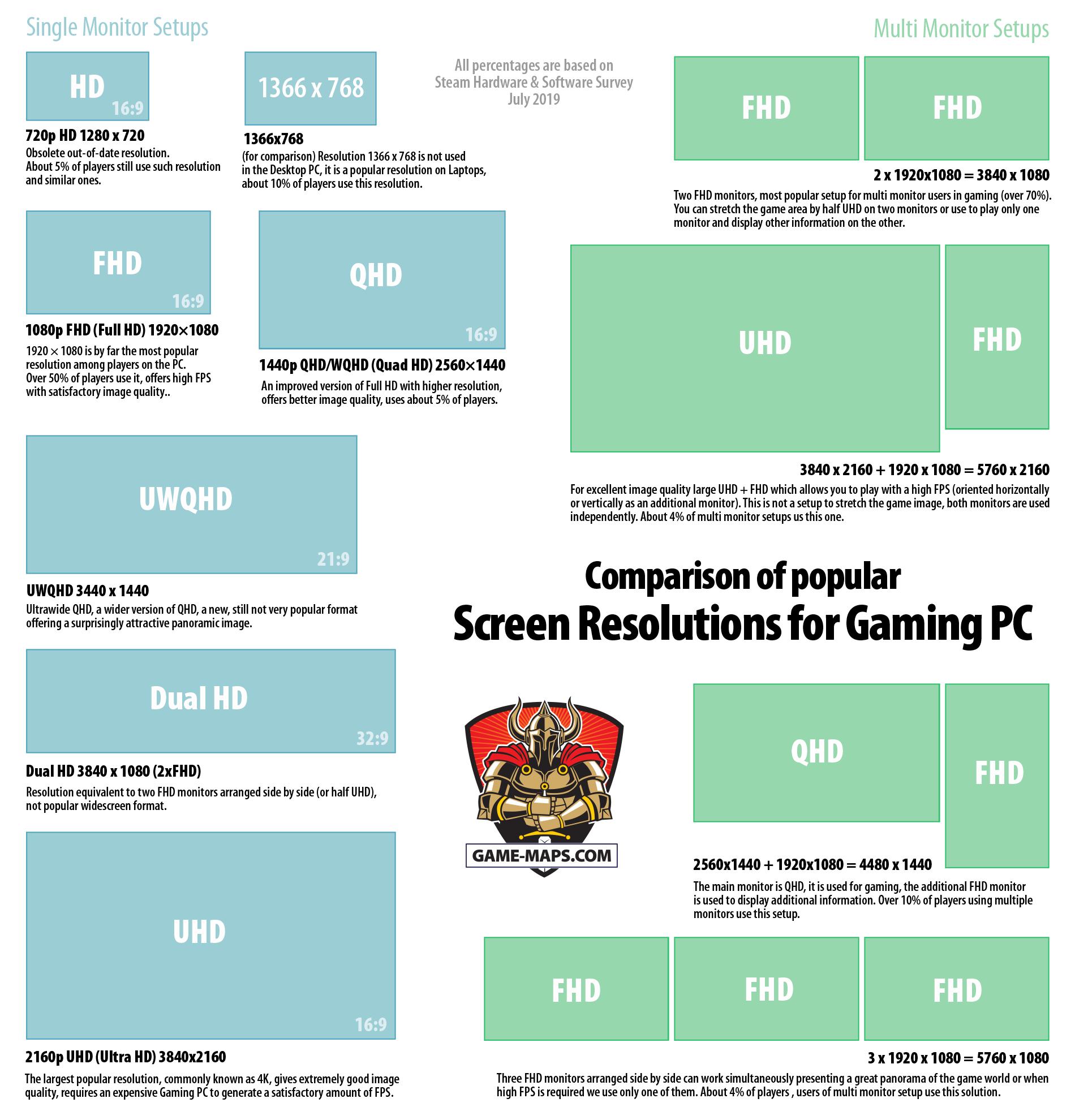

- Why choosing of screen resolution for Gaming is so important?
- A few words about the screen resolution and FPS (frames per second).
- Screen Resolutions in PC Gaming
- 720p HD
- WSXGA+
- 1080p FHD
- 1440p QHD
- UWQHD
- Dual HD
- 2160p UHD
- Primary Display Resolution in Steam Hardware & Software Survey: July 2019
- Multi Monitor Setup for Gaming
- Multi-Monitor Desktop Resolution in Steam Hardware & Software Survey: July 2019
- What else should you know about the screen resolution in Gaming PC?
- Resolution is not Screen Size.
- Higher screen resolution requires more memory on the video card.
- Native Resolution is the best.
- Aspect Ratio other than 16:9
- Various cables do not work the same in hi-res.
- High Resolution and Old Games
- Best Screen Resolution for PC Gaming
important
Why choosing of screen resolution for Gaming is so important?
Before you decide which components you will use to build your Gaming PC, you have to decide what screen resolution you will use to play games.
Screen resolution is directly related to:
- The type and required performance of the GPU (video card), which is directly transferred to its price.
- The amount of Video Memory on the graphics card - higher resolutions require more VRAM.
- CPU type and speed so that your Central Processing Unit does not slow down the fast graphics card
- Motherboard type to match the CPU.
- The type and parameters of the monitor (s) to work in native resolution matched to the screen resolution you plan.
The result of a poor selection of the planned resolution in relation to the performance of Gaming PC may be the lack of smooth gameplay (low FPS), which is what every player wants to avoid.
So, let's try to think about what resolution you should use when playing games.
minor
A few words about the screen resolution and FPS (frames per second).
Simplifying the topic, visual quality of game graphics and smoother gameplay in PC games are influenced by:
- Screen Resolution in Gaming PC, maximum number of separate pixels (basic units of a digital image) in each dimension that can be displayed, e.g 1920x1080. Higher resolution makes the images displayed in the game becomes more accurate and detailed, simply nicer and more realistic.
- FPS (frames per second) - the number of images (frames) that your Gaming PC can generate on the monitor screen in a unit of time, a second. Higher FPS in games increases the realism of the displayed image by improving the smoothness of the displayed images.
The amount of FPS displayed by your Gaming PC depends on the computing power of your CPU (Central Processing Unit) and in particular the computing power of your GPU (Graphics Processing Unit).
The higher the screen resolution you want and the greater the intended amount of FPS, the more calculations must be made per unit of time.
Sample number of pixels to be calculated depending on the resolution and FPS:
| Resolution | 1 FPS | 30 FPS | 60 FPS |
|---|---|---|---|
| 1280 x 720 (720p HD) | 921 600 pixels | 27 648 000 pixels | 55 296 000 pixels |
| 1920 x 1080 (1080p FHD) | 2 073 600 pixels | 62 208 000 pixels | 124 416 000 pixels |
| 2560 x 1440 (1440p QHD) | 3 686 400 pixels | 110 592 000 pixels | 221 184 000 pixels |
| 3840 x 2160 (2160p UHD) | 8 294 400 pixels | 248 832 000 pixels | 497 664 000 pixels |
As you can see clearly, for example, to get the same amount of FPS at 3840 x 2160 as you would at 1280 x 720, you'll need a 9 times more powerful GPU + CPU duo.
And this is the reason why the choice of resolution to play games is the first and most important choice you have to make when buying a new Gaming PC.
Because the prices of the CPU and GPU you will have to pay for to maintain the desired amount of FPS in a given resolution may be too high. A higher resolution always comes with a higher price that you will have to pay for your Gaming PC to keep your FPS demands.
Unless you prefer nicer graphics at the expense of fewer FPS, or games you will play do not require high FPS.
important
Screen Resolutions in PC Gaming
720p HD
| Name | 720p HD |
| Pixels | 1280 x 720 |
| Aspect ratio | 16:9 |
| Image Quality | Low |
| FPS requirements | Low |
| Popularity | 5% |
This is an outdated resolution, experiencing its splendor at the time of the first LCD monitors.
I advise against choosing such resolution, because the player will always be unsatisfied with image quality. Alternatively, it works as an additional monitor.
Similar resolutions are 1024 x 768, 1280 x 800 and 1280 x 1024.
WSXGA+
| Name | WSXGA+ |
| Pixels | 1680×1050 |
| Aspect ratio | 16:10 |
| Image Quality | Average |
| FPS requirements | Low |
| Popularity | 5% |
Also slightly outdated resolution, slightly higher than 720p. The image quality is slightly better but still unsatisfactory.
I do not recommend using this resolution except as an additional display.
Similar resolutions: 1600 x 900.
important
1080p FHD
| Name | 1080p FHD (Full HD) |
| Pixels | 1920×1080 |
| Aspect ratio | 16:9 |
| Image Quality | Good |
| FPS requirements | Low / Medium |
| Popularity | over 60% |
Definitely the most popular screen resolution currently used for Gaming PC.
With at least good image quality, it still allows high FPS to be obtained relatively easily.
This resolution is most often used by players playing fast action games and shooters, mainly in multiplayer.
I recommend this resolution for players expecting high FPS in games.
Similar resolutions: 1920 x 1200.
important
1440p QHD
| Name | 1440p QHD/WQHD (Quad HD) |
| Pixels | 2560×1440 |
| Aspect ratio | 16:9 |
| Image Quality | Very Good |
| FPS requirements | Medium |
| Popularity | 6% |
QHD is noticeably higher resolution than Full HD. The graphics quality is satisfactory, but unfortunately this is often paid for by smaller FPS. For such resolution you will need a higher-end graphics card.
I recommend this resolution for people who pay attention to good image quality and are able to compromise on the amount of FPS.
Similar resolutions: 2560 x 1080.
UWQHD
| Name | UWQHD |
| Pixels | 3440 x 1440 |
| Aspect ratio | about 21:9 |
| Image Quality | Very Good |
| FPS requirements | Medium / High |
| Popularity | 0.6% |
UWQHD (Ultra-Wide Quad HD) also called "1440p Ultrawide" is a relatively new resolution for players, it is a wider version of QHD.
It gives very good image quality, while requiring solid video card performance.
This type of resolution, especially used on large size monitors, gives a really amazing sense of immersion. This resolution will satisfy even picky gamers.
I recommend it for players expecting a great visual experience in the games, with fast computers and able to accept FPS drops while playing.
Dual HD
| Name | Dual HD |
| Pixels | 3840x1080 |
| Aspect ratio | about 32:9 |
| Image Quality | Very Good |
| FPS requirements | Medium / High |
| Popularity | Low |
A new, still unpopular resolution, combining two FHD screens into one monitor. It gives an extremely wide and beautiful picture in the games. It is half of UHD (4K) resolution, still maintaining a large screen width, with half the requirements for UHD graphics card performance.
You have to be aware that not all games can support this screen resolution.
This resolution is recommended for people who want to admire the image quality, can give up high FPS and do not want to invest in UHD.
important
2160p UHD
| Name | 2160p UHD 4K (Ultra HD) |
| Pixels | 3840x2160 |
| Aspect ratio | 16:9 |
| Image Quality | Excelent |
| FPS requirements | High / Very High |
| Popularity | 1.6% |
The highest commonly available screen resolution for gamers.
It gives extremely good image quality, unfortunately at the expense of very high hardware requirements for the computer and in particular the graphics card.
Obtaining a satisfactory amount of FPS at such resolution requires the use of the most expensive graphics cards available on the Gaming PC market.
This resolution is recommended for players who want to have the best graphics quality available. It is not recommended for people playing fast games requiring high FPS.
minor
Primary Display Resolution in Steam Hardware & Software Survey: July 2019
Percentage of players using a given screen resolution:
- 1024 x 768 - 0.52%
- 1280 x 1024 - 1.69%
- 1280 x 800 - 0.69%
- 1280 x 720 - 0.39%
- 1360 x 768 - 1.71%
- 1366 x 768 - 11.90% - Laptops
- 1440 x 900 - 3.24%
- 1600 x 900 - 3.21%
- 1680 x 1050 - 2.32%
- 1920 x 1080 - 63.95% - 1080p FHD
- 1920 x 1200 - 0.85%
- 2560 x 1440 - 4.57% - 1440p QHD
- 2560 x 1080 - 1.00%
- 3440 x 1440 - 0.56%
- 3840 x 2160 - 1.61% - 2160p UHD
- other - 1.79%
minor
Multi Monitor Setup for Gaming
Having more than one monitor in a Gaming PC does not necessarily mean that the game screen must be stretched simultaneously over the entire available area of both screens.
With the UHD + FHD set you can use the monitors interchangeably, on UHD you can play games in which you want to get the best graphics quality and use FHD for games requiring high FPS.
A second monitor can be used during the game to run other applications, voice communication, chat, internet browsing and more.
Of course, having two FHD monitors tempts you to use the 3840x1080 resolution extended to both monitors, although the edges of the screen located exactly in the middle of the field of view are a bit daunting.
This problem disappears with a 3 x FHD system and a resolution of 5760x1080, where the central monitor is our main monitor and the two side ones widen the field of view considerably.
However, you must remember that the resolutions used for multi-monitor systems add up and the computer's performance requirements are the same as if you had one large monitor, i.e. these are high requirements.
Although I have been using multi-monitor systems for both work and play for a long time, I suggest that you at least at the beginning give up this solution.
Choose the highest resolution that your Gaming PC will be able to comfortably generate and choose the largest size monitor that matches it with native resolution. You can buy more monitors in the future if you feel the need to own them.
minor
Multi-Monitor Desktop Resolution in Steam Hardware & Software Survey: July 2019
Percentage of players using a multi monitor setup and given screen resolution:
- 3840 x 1080 = 2 x 1920x1080 - 74.36%
- 4480 x 1440 = 2560x1440 + 1920x1080 - 11.76%
- 5760 x 1080 = 3 x 1920 x 1080 - 4.88%
- 5760 x 2160 = 3840 x 2160 + 1920 x 1080 - 4.40%
- other - 4.6%
What else should you know about the screen resolution in Gaming PC?
important
Resolution is not Screen Size.
We are constantly talking about Screen Resolution and this should not be confused with the real size of the monitor screen.
Screen Resolution is the maximum number of vertical and horizontal pixels that a given monitor can display.
Screen Size is the physical size of the monitor screen displaying the image. It is most often measured in inches, and the value of the length of the diagonal of the screen.
So don't be surprised if you find a 27 inch monitor with resolution 1920×1080 and a 27 inch monitor with resolution 3840x2160. Both will have the same Screen Size (will be of similar size) but a completely different resolution. They have pixels of different physical sizes.
Due to the fact that Screen Size does not affect the FPS in any way and at the same time significantly increases the positive visual experience, we always buy monitors with the largest screen size we can afford and which will fit on our desk.
Sometimes a monitor with a lower resolution and a larger screen size will give us more fun with games than a small monitor with high resolution.
insignificant
Higher screen resolution requires more memory on the video card.
As you probably already understand, high resolution in games requires an efficient computer including a fast graphics card. But that's not all.
In order for your graphics card to be able to display higher resolutions, it must have sufficient video memory. And we are not talking about RAM, but about the amount of memory that is on the video card.
For the following resolution requires the following sizes of video memory on the card:
- 720p (1280 x 720) resolution will require at least 2GB of Video Memory
- 1080p (1920×1080) resolution will require at least 4GB of Video Memory
- 1440p (2560×1440) resolution requires between 6GB and 8GB Video Memory
- 2160p (3840x2160) resolution requires between 8GB and 12GB Video Memory
Remember this when buying a graphics card for your Gaming PC.
important
Native Resolution is the best.
If you buy a gaming monitor, you'll know the maximum number of vertical and horizontal pixels it can display.
This is Native Monitor Resolution.
This resolution should be selected in the game settings for the best image quality.
If you want to play games at a lower resolution than your monitor's Native Resolution, you should choose resolutions completely dividing by two.
So, for example, if you have a UHD 3840x2160 monitor and the game you want to play has too high requirements and your graphics card is not able to maintain the required amount of FPS, you can set the game's resolution FHD 1920 × 1080 which is half the height and half the width of the UHD resolution.
If you don't do this and choose a resolution in the game that doesn't divide by two, the image will be out of focus and blur.
You will not be able to play at a higher resolution than your monitor's Native Resolution.
insignificant
Aspect Ratio other than 16:9
16:9 is currently the most popular Aspect Ratio in PC gaming.
Most modern games can adapt well to resolutions in which the aspect ratio is not 16:9. However, choosing resolutions with an aspect ratio that differ significantly from 16:9 should be taken into account with the possibility of problems with game interface.
The real difficulty for owners of aspect ratio other than 16:9 is publishing their gamplay videos on YouTube. The movies will publish perfectly, but don't avoid the black bars at the bottom and top of your video.
There are no other contraindications for an aspect ratio other than 16:9 and the game worlds in 21:9 can look great.
insignificant
Various cables do not work the same in hi-res.
We are talking here about the cable connecting the graphics card with the monitor. While in lower resolutions it is unnoticed problem and basically every HDMI cable is doing well (preferably that it is a HDMI 2.0 cable) at higher resolutions, especially when you want to take advantage of all the benefits of your "super gaming monitor" such as 144Hz refresh rates, Nvidia's G-Sync, AMD's FreeSync or HDR you will need a DisplayPort 1.4 cable.
Remember this because not all monitors have the appropriate cables attached.
insignificant
High Resolution and Old Games
If you are only going to play new games, high resolution will be your best friend, giving you fantastic visual quality.
Unfortunately, there are problems with old games.
A large number of older games do not support modern high-resolution graphics modes. Using high resolution UHD / 4K you can experience a strong disappointment when your favorite game occupies a small rectangle in the center of the screen. And unfortunately there is no good advice. Even scaling the old game across the width of the entire monitor does not increase its visual quality.
Especially when you buy a monitor with non-standard screen propositions, e.g. Ultra-Wide, you have to realize that even some of the new games may not display properly.
For old games, 1280 x 720 (and similar) seems to be a good resolution, i.e. resolutions from the times when these games were written.
important
Best Screen Resolution for PC Gaming
Screen resolution for the undecided.
If you can't determine your predispositions for resolution in your Gaming PC, choose 1080p FHD (1920 × 1080) without hesitation. This resolution will give you the pleasure when playing every game, you will not have to worry about low FPS and you will see all the graphic effects available in games.
If you are going to buy a high end Gaming PC with a very efficient graphics card, you can think about 1440p QHD (2560 × 1440), this resolution should also provide you with high performance in all games, while you will have nicer graphics.
Screen resolution for a cheap PC.
Even when buying a cheap Gaming PC you should not go below 1080p FHD (1920 × 1080) screen resolution.
It is worth adding that if you have cheap, economical in price, Gaming PC, FHD resolution is the only option.
I am the King of high FPS.
If you mainly play fast games or multiplayer shooters, you basically have no choice. Anything above 1080p FHD (1920 × 1080) will slow you down. Even if you have a very powerful PC Gaming, you will benefit more from three digital FPS than slightly better graphics quality.
I want games to be beautiful!
If you like nice graphics in games and you do not have the head to calculate FPS, choose 1440p QHD (2560 × 1440), it will be even better on UWQHD (3440 x 1440), or maybe Dual HD (3840x1080). If you add a monitor with a large Screen Size to it, the image quality in games will be great. With an efficient high end graphic card, you may even be able to enjoy satisfactory FPS.
Playing games at resolutions greater than FHD has a lot of charm in it, especially in panoramic resolutions.
I want resolution with the best image quality.
Resolution 2160p UHD (3840x2160) is created just for this purpose. The image quality in UHD is really very good. The problem begins with the smoothness of games. Even the fastest graphics cards and fastest CPUs on the market will not provide you with an average value of 60 FPS in many games. There will be a lot of games that run very smoothly, but it will never be the norm.
UHD is fantastic for more static games like strategy games and adventure games, even most RPGs looks great.
Unfortunately, you can't completely separate the FPS amount from the overal image quality, so even if you want to have the best graphics quality, it's worth considering alternatives to UHD like UWQHD (3440 x 1440) or 1440p QHD (2560 × 1440).
by Longwinter (game-maps.com)
aka "Bearer of UHD + FHD who is not enough of FPS because he has too high resolution".
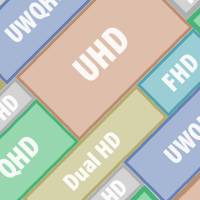
What is the Best Screen Resolution for PC Gaming?

Graphics Cards for PC Gaming
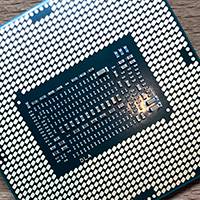
Best CPU for Gaming PC
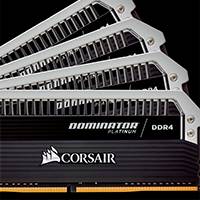
How much RAM do I need for Gaming?

PC Storage Guide: M.2 NVMe vs SATA SSD vs HDD
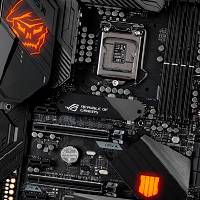
Best Motherboard for PC Gaming
Use Disqus comments below
All your comments, suggestions and corrections are very welcome.
Your experience helps other players.
Each comment will be read and the information contained therein used to improve the content of this page.
Thank You.
